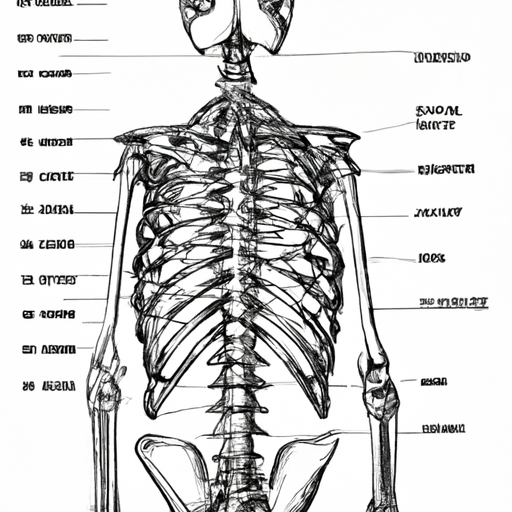Introduction: Your Dog’s Anatomy
You might have found yourself wondering about your dog’s anatomy. After all, you’re responsible for their well-being and understanding their bodies can help you become a better caregiver. Today, let’s focus on one specific question: how many ribs do dogs have?
Understanding Your Dog’s Ribcage
Just like us, dogs have a ribcage that protects their vital organs. However, unlike humans who have 12 pairs of ribs, dogs typically have 13 pairs, making a total of 26 ribs. But remember, this can vary depending on breed and individual genetic variations.
The ribs are divided into three types:
- True ribs: The first 9 pairs are connected directly to the sternum or breastbone.
- False ribs: The next 3 pairs are not connected directly to the sternum.
- Floating ribs: The last rib pair is not connected to anything at the front of the body.
Understanding this structure can help you detect any abnormalities in your dog’s ribcage and respond appropriately.
The Function of Your Dog’s Ribs
You might have asked, “Why so many ribs?” After all, dogs seem to lead an active, yet injury-free life. The reason lies in the versatility and protection these ribs offer.
- Protection: The ribs serve as a protective shell for the organs. Any direct trauma to the chest is first absorbed by the ribs, reducing the risk of organ damage.
- Respiration: The ribs play a crucial role in your dog’s respiration. They rise and fall with every breath, helping to move air in and out of the lungs.
- Flexibility: The number of ribs adds to the flexibility of your dog’s body, allowing it to twist and turn during play or hunting.
Common Rib-Related Conditions in Dogs
Despite their protective function, the ribs are not invincible. Dogs can suffer from a variety of rib-related conditions, such as:
| Condition | Symptoms |
|---|---|
| Rib fractures | Pain, difficulty breathing, reluctance to play |
| Costochondritis (inflammation of the rib cartilage) | Pain, swelling in the chest area, lethargy |
| Flail chest (multiple broken ribs) | Trouble breathing, chest moves in an unusual pattern |
If you notice any of these symptoms, seek immediate veterinary assistance.
FAQ: Quick Answers for the Busy Caregiver
Q: How many ribs do dogs have?
A: Dogs typically have 13 pairs of ribs, a total of 26.
Q: What are the different types of ribs in dogs?
A: Dogs have true ribs, false ribs, and floating ribs.
Q: What functions do the ribs serve in dogs?
A: The ribs provide protection, play a role in respiration, and contribute to bodily flexibility.
Q: What are some common rib-related conditions in dogs?
A: Common conditions include rib fractures, costochondritis, and flail chest.
Understanding your dog’s anatomy is a crucial part of being a responsible and caring pet owner. By knowing how many ribs your dog has and their function, you can better monitor their health and wellbeing.



